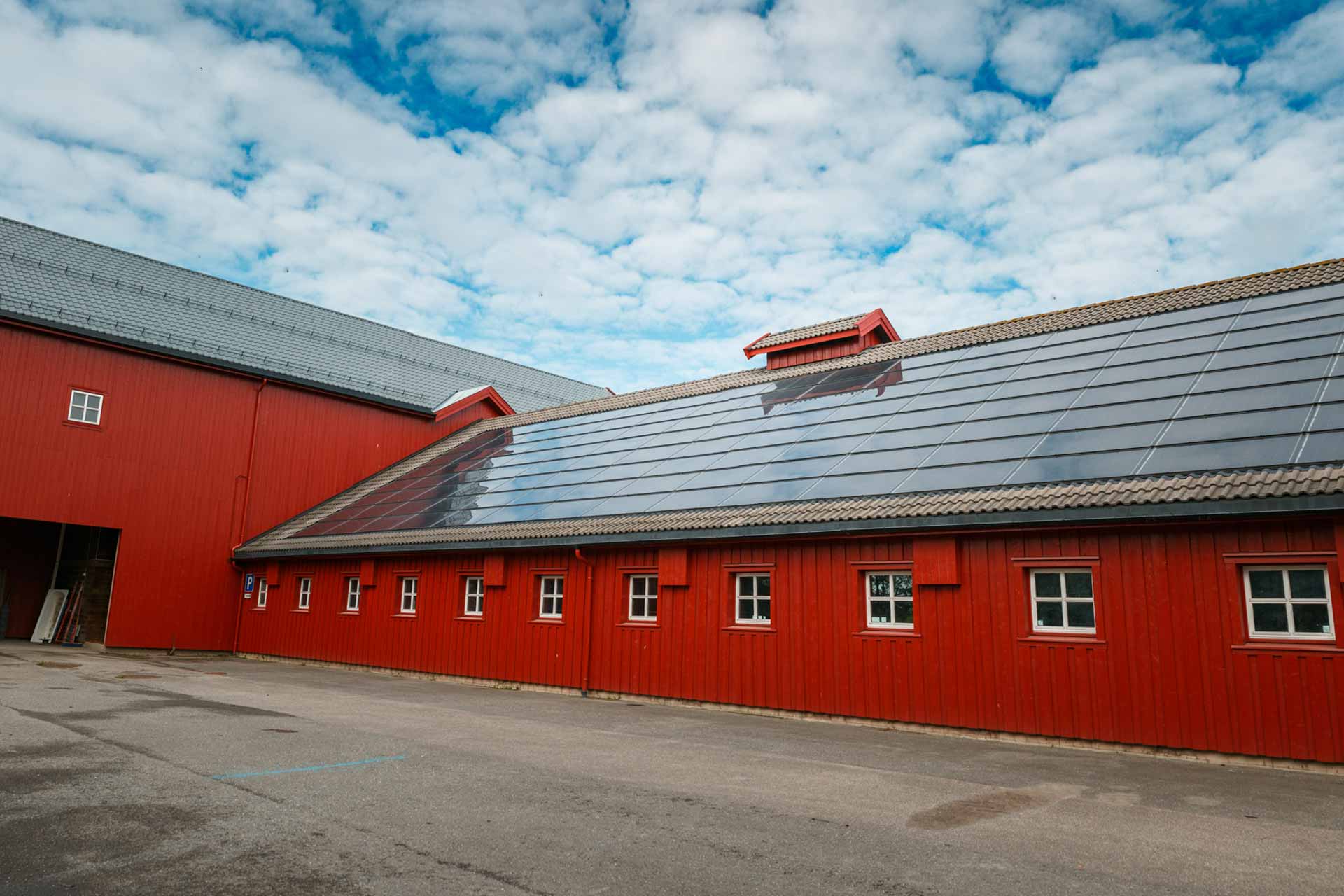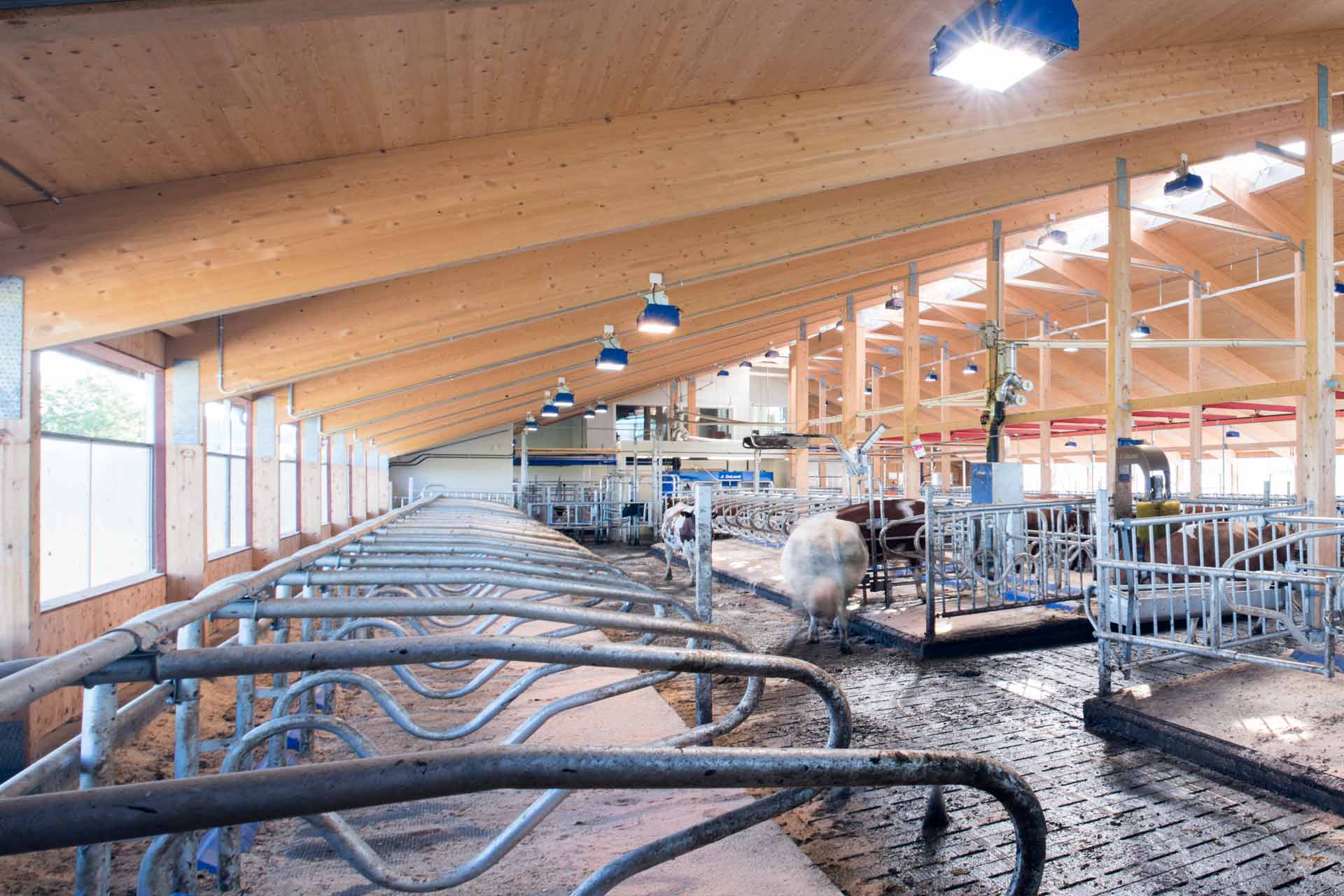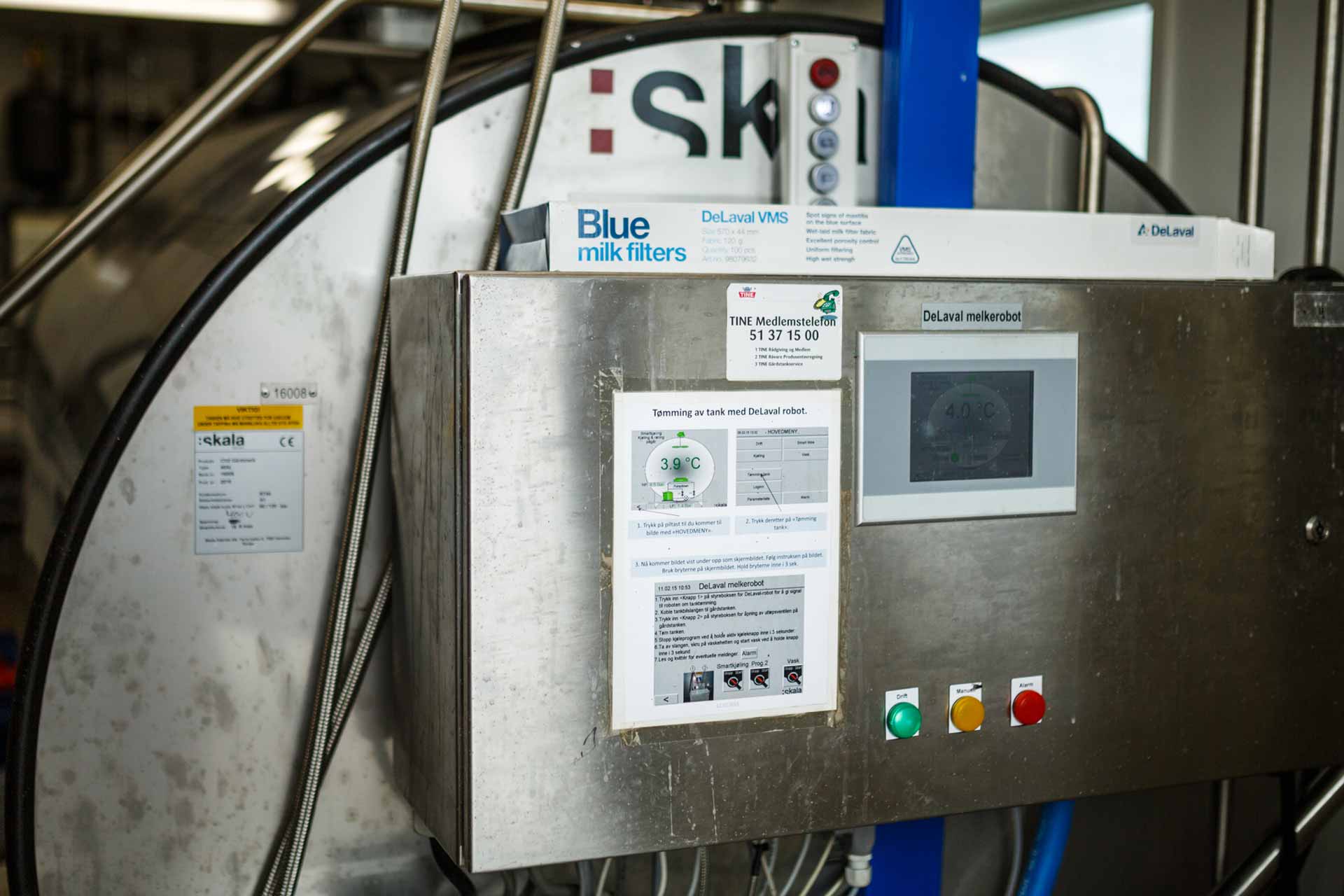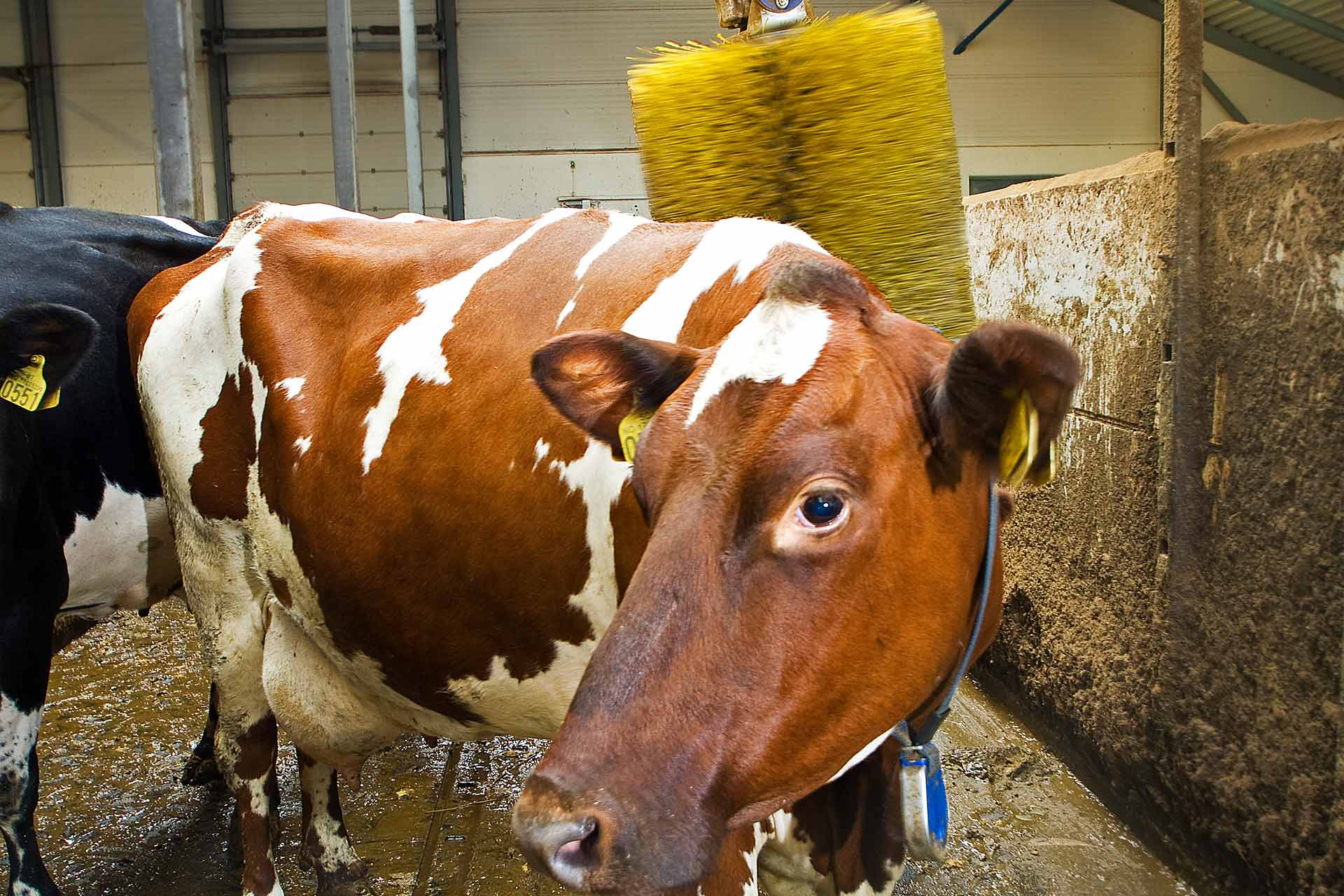Mære Agricultural School
Our Farm
Get an insight into our facilities and how we work to achieve the goal of the zero-emission farm.

We pave the way for new solutions within climate and energy in agriculture
On our farm, we arrange trials, testing and demonstrations of climate solutions. This takes place both in the barn, the greenhouse and out in the fields.
When we are going to build houses or make investments in barns and outdoors, we make arrangements so that the initiative can show new solutions in climate and energy. Pupils, farmers and agriculture in general can take part in the activities we do in the field of climate and energy. Construction of the demonstration facility takes place in close collaboration with Trøndelag County Council.
We work closely with Skjetlein High School, and together we have milk production, pig production, suckler cows, sheep, poultry and beef. We have grass, grain and potato production on the farms and we have both conventional and organic area.
Decares of cultivated area
Tons of tomatoes per year
Production animals
kWh produced with solar cells
The facilities

The agriculture on our farm
Mære agricultural school has a cultivated area of 1,050 acres and 300 acres of leased grazing land. The forest area is 550 acres.
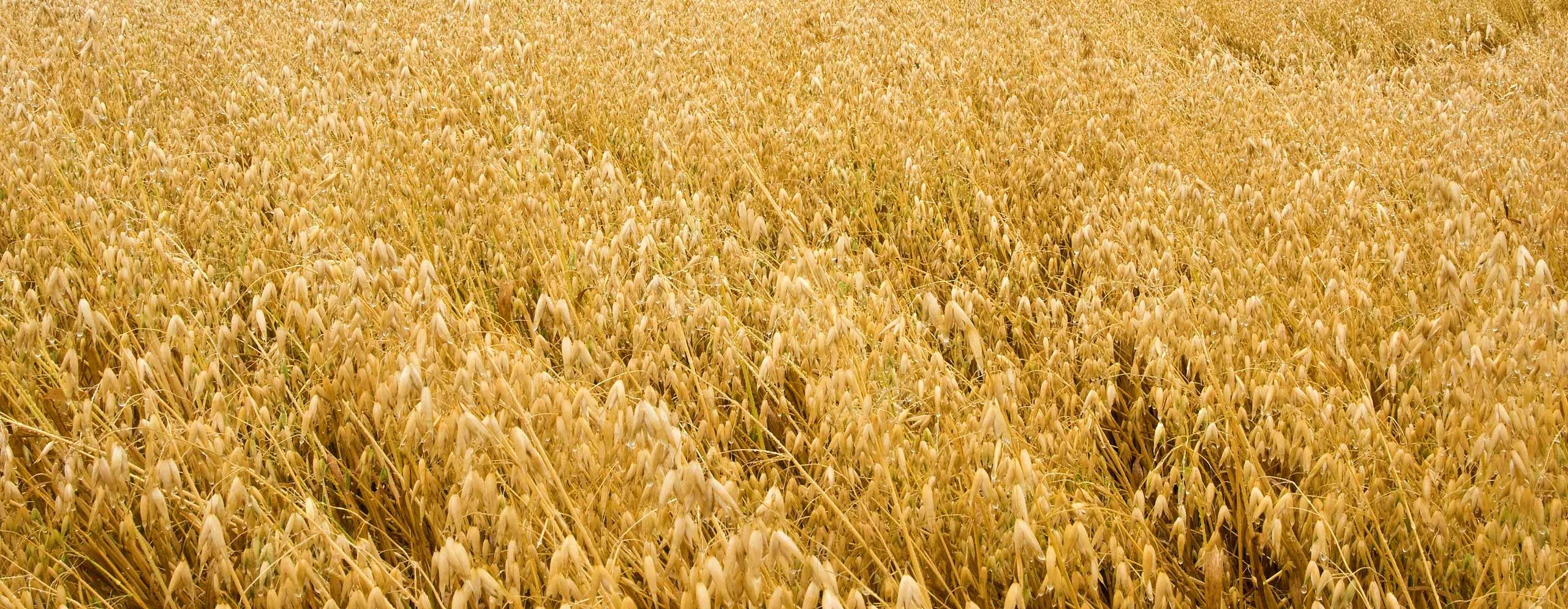
Area distribution
Most forage is grown; meadow mixtures for silage mowing, green fodder crops, rye and ryegrass for annual grazing in addition to cultivated pastures. Barley and wheat are also grown on around 200 acres and potatoes on 25 acres. 100 acres of the area is cultivated organically with barley and meadow in the crop rotation.
The soil mostly consists of light clay, with varying amounts of silt and sand. There is little marshland left on Mæresmyra. The marsh has been transformed and "used up" after it has been cultivated for over 100 years. The subsoil that remains is clay and silt. There is some moraine soil on the mound where the school buildings are located.
Shifting cultivation
A versatile management system that we have at Mære, with a change between different crops on the different soil shifts, provides good conditions for cultivating a good soil. The soil is allowed to remain undisturbed for longer when grass crops are grown, and more organic material is built up in the soil. Organic material is necessary to increase the content of living organisms in the soil, from the small bacteria up to earthworms. The turnover of nutrients is faster, a good soil structure is built up, and the soil can withstand more drought in dry periods, and can receive more water in rainy periods.
Good utilization of fertiliser
Good utilization of livestock manure and well-planned fertilization practices result in better utilization of manure and thus less need to buy mineral fertiliser. During the production of mineral fertiliser, greenhouse gases are also emitted, so that good utilization of own fertilizer resources is a good climate measure. At Mære, a livestock manure spreader is used which places the manure in strips on the ground. This provides better utilization of the nitrogen in the fertiliser, and less loss of methane to the environment.
Precision agriculture
The use of precision technology in agriculture is another measure to make better use of resources. At Mære, we have a tractor fitted with a nitrogen sensor. It scans the plant cover in front of the tractor and tells a smart fertilizer spreader behind how the fertilizer should be dosed. The school also has a section-controlled fertilizer spreader and a section-controlled sprayer that ensures the most precise use of fertilizer and pesticides.
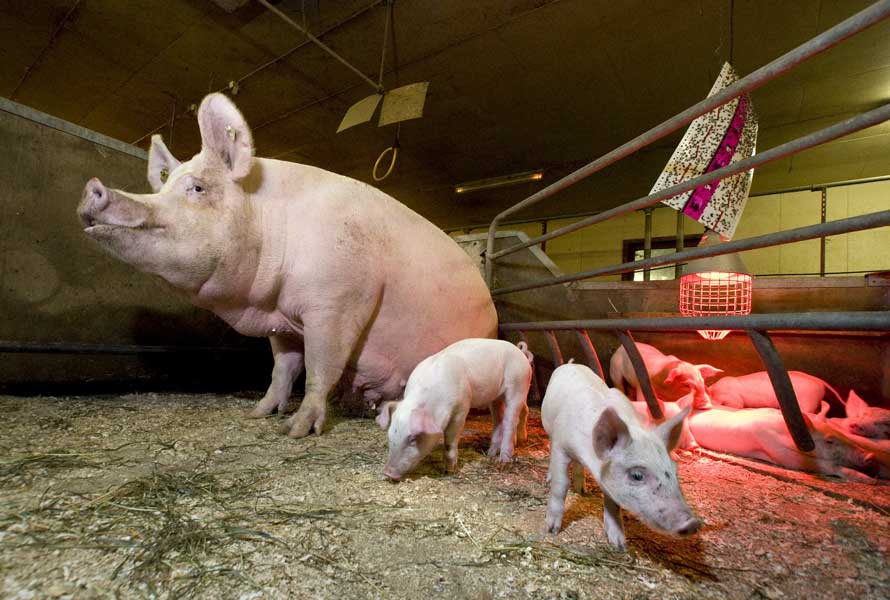
Pig houses and pig production
The pig house on Mære was built in 2008 and is an important teaching space for our students, but also an attractive arena for experimental activities. In the pig house, we run a combined production with 60 yearling sows and 1,260 fattening pigs and 700 piglets are delivered per year. Our students receive instruction in production, but also participate in the practical execution of experiments with the collection of experimental data and weighing of pigs, etc.
Production results 2021
The barn building
Equipment in the barn
Experiments in the pig barn
- 34 weaned piglets per yearling sow (Top 10 in Norway)
- 1080 g growth per day on fattening pigs
- 2.5 FEn per kg growth in fattening pigs
- 550g growth per day in the piglet period
- 1.7 FEn per kg growth in the piglet period
- The barn is built of concrete elements and has a wooden roof structure.
- The building is 25 * 66 m, a total of 1650 m2 including social rooms (office, shower, toilet etc.)
- 2 birth to piglet wards with 20 farrowing pens and 2 sick pens in each department.
- 2 fattening pig departments with 18 pens of 12m2
- Pregnancy department with 28 insemination booths, 4 recruitment bins and 6 buffer bins as well as a bin for uncastrated male pigs.
- Negative pressure ventilation from Skov
- Daltec dry feeding system with portion feeding for lactating sows and weaned piglets
- Big Dutchman wet feeding system for fattening pigs and pregnant sows
- Growth registration with a camera for fattening pigs
- Logging of climate in the fattening pig departments
- Spraying on the fertilizer area in all departments.
- Felleskjøpet Feed-development tests concentrated feed before launching it on the market
- The Longevity project - NORSVIN breeds for better maternal qualities and durability in the TN70 sow
- The pig lift - Mære carries out practical experiments on animal welfare
- Camera weighing
- Gas measurement
In the pig barn, researchers have access to camera weighing, gas measurement, InGris data, weight registrations and we perform manual tasks related to experiments.
Milk barn and milk production
The dairy barn on Mære was built in 2016 and today has room for 55 yearlings with calves and heifers. The milk quota is 400 tonnes and the waste in the barn is between 8500 and 9500 kg EKM (energy-corrected milk) per year cow. The animal welfare indicator shows a high score and students and staff make a good effort every day to ensure that our animals are well.
Climate measures
Technical equipment in the barn
Preparation for trials
Trials in the dairy barn
The barn is built of wood, which binds CO2 compared to buildings in concrete. The walls are made of solid wood, and no additional insulation has been added beyond the wood's own insulating capacity. There is natural ventilation in the building.
Heat is recovered by cooling the milk in the milk tank. A heat exchanger is fitted to the tank, and the heat is used to heat water in the hot water tank, or is given as tempered drinking water to the animals.
A heat pump (air to air) has been installed to provide heat for heating common rooms.
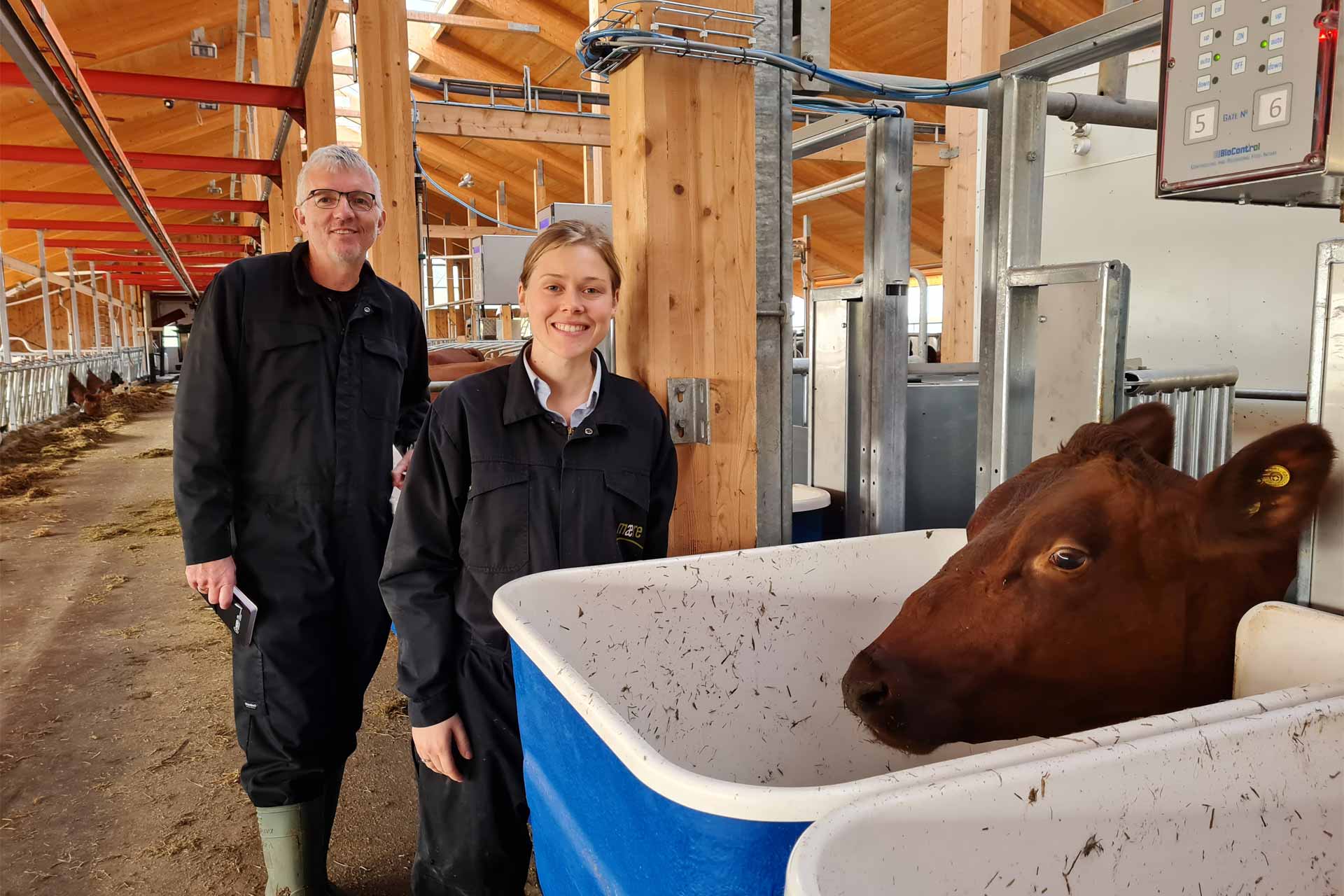
- TKS feeding system (picture)
- Milking robot from DeLaval
- Robot that scrapes manure
- Heat recovery on the milk tank
- Camera
- Feeding troughs with 26 feeding places
- Methane gas measurement (Greenfeeder)
- Production data
Geno breeds on a greener cow using individual measurements of methane emissions and feed efficiency on the dairy cows in the barn (Greenfeed and feed trough with weight registration)
NIBIO conducts experiments with methane measurements when the cow grazes
Felleskjøpet Feed-delepment regularly tests new concentrate types
Nord University conducts behavioral studies with video and Real Time Location System (RTLS) and runs feeding trials with various additives (macroalgae, biochar)
The greenhouse was built and put into use in 2007. It has a total floor area of 3,000 m². Half of the area is used for plant production. The rest of the area consists of a construction hall, designed for the landscape gardeners, as well as common rooms such as changing rooms, sanitary facilities and classrooms. and a separate processing room.
Here, tomatoes are grown on 1/3 of the area. There are an average of 1.5 new plants set out each year, and the plants that are set out are raised in the greenhouse. The tomato crop is now at 70 tonnes per year. year. The rest of the area used for plant cultivation is used for Christmas- and summer flowers.
Energy consumption
There is an annual consumption of electricity of 1.1 GWh (1.1 million kWh). Tomato production in particular is dependent on a lot of light all year round. Furthermore, around 800,000 kWh of heat energy is used a year to keep production in the greenhouse going. Most of this energy comes from the heat storage installed in the greenhouse.
How does the thermal storage work?
In the greenhouse, an advanced system has been built to take care of heat energy created by solar heat and light in the greenhouse. In the roof of the greenhouse, aerotempers have been installed which, through cooling and dehumidification of the air, make it possible to take care of the excess energy. The energy is stored underground in a large water tank (short-term storage). When the water in this storage has reached a certain temperature, the heat is led further down into deep boreholes outside the greenhouse (long-term storage). There are a total of 44 boreholes in which the heat energy can be stored. The heat is taken out in the cold season, and the effect is increased by using heat pumps. Annually, the heat storage provides a net delivery of more than 900,000 kWh of heat energy. The use of propane for heating has fallen sharply since the thermal storage was put into use. The heat from the heat storage is used to heat the greenhouse, as well as classrooms, offices and other common rooms at the school. Heating pipes have been laid in the ground which transport the heat around the school grounds.
The heat storage has been developed by researchers at Gether AS in collaboration with Trøndelag County Council, SINTEF, Kværner and the school.
Research and development (R&D) Area
We believe in the meeting between researchers, farmers, businesses, employees and students. At Mære, we unite around common challenges in climate and energy, and innovations are created. Our task is to be a good arena for R&D, where we can contribute with buildings, land, livestock and skilled employees as well as a large network within the agricultural industry.

